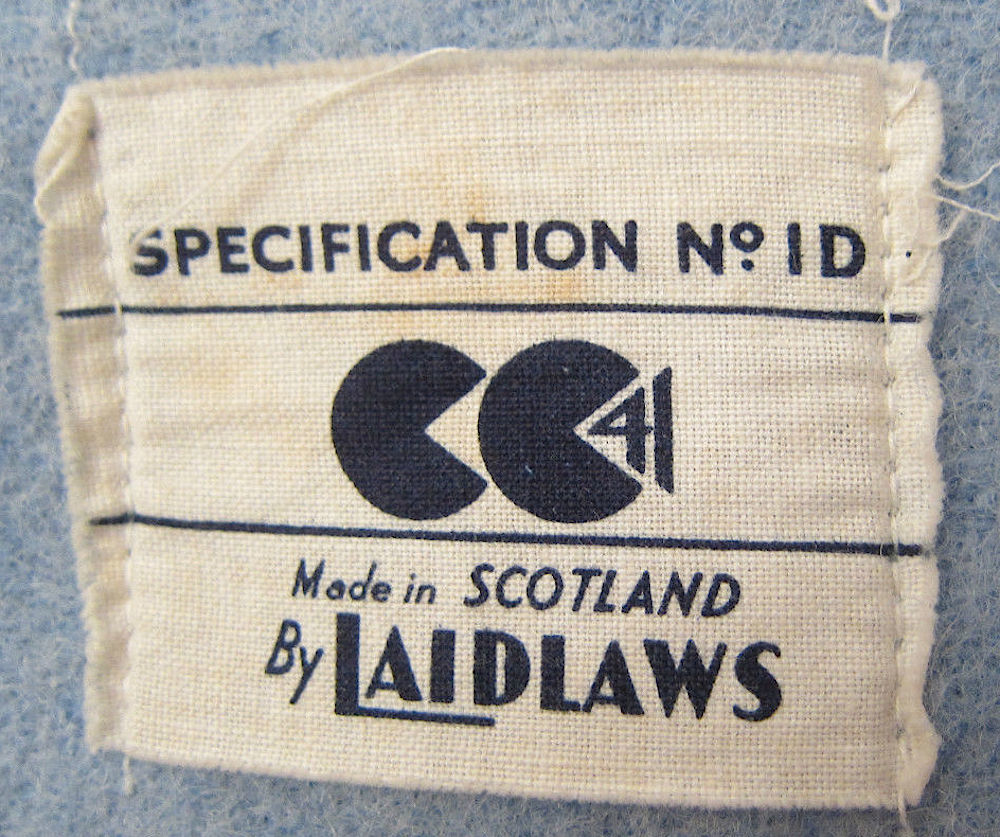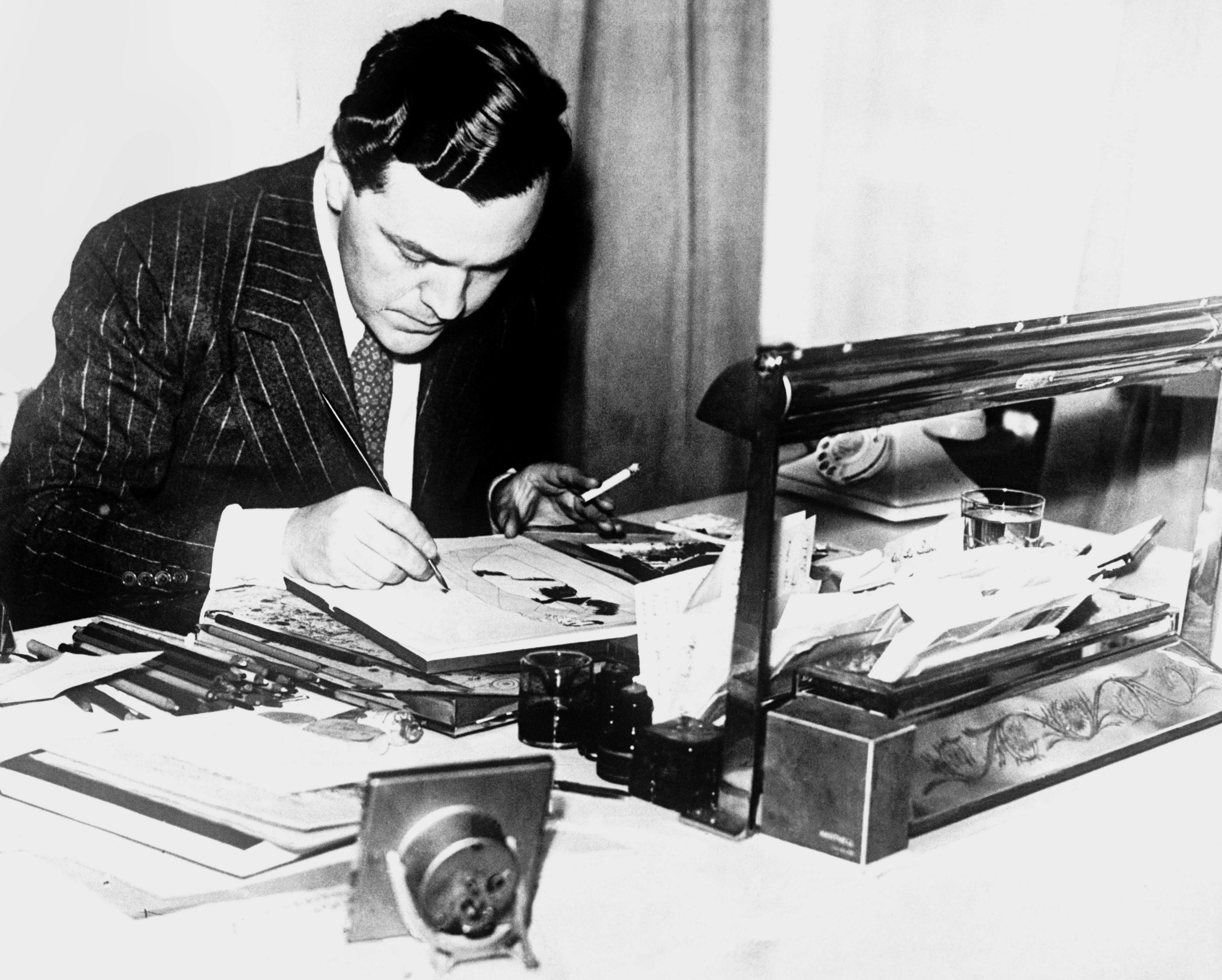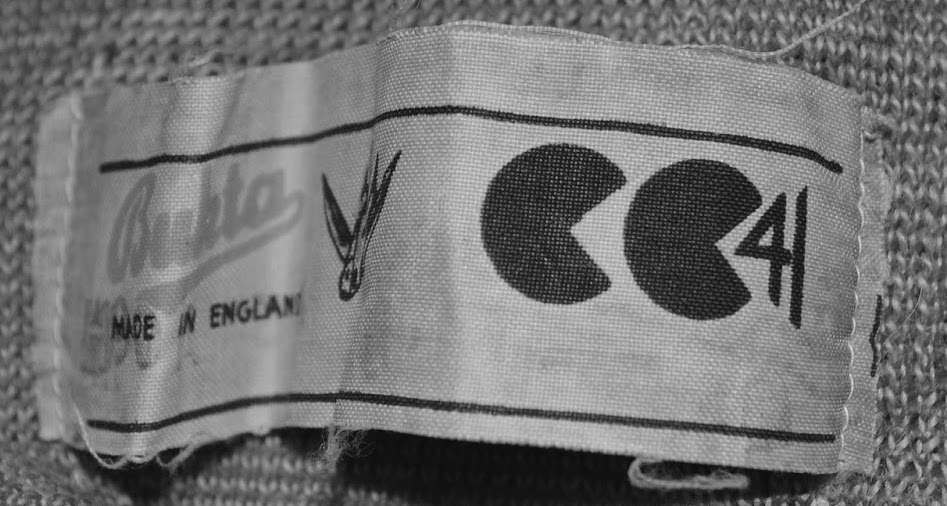Most of us today if we came across the CC41 WW2 Utility label would be reminded of two Pac-Men figures intent, for some reason, on eating and destroying the number ’41’. In 1942, however, and 38 years before anyone had heard of Pac-Men, the label reminded the British public of two cheeses with a small wedge taken out – cruel maybe when everyone was allowed but one oz of cheese per week for most of the war and several years after. The ‘Two Cheeses’ logo was designed by the commercial artist Ronald Shipp and actually stood for Civilian Clothing with the 41 representing the year the scheme was first proposed. From the beginning of 1942 nearly all clothing produced in the UK had this label sewn on.
Inflation for clothing had doubled from the beginning of the war in September 1939 and May 1941 and a way had to be found to make clothing as cheap and basic as possible while somehow maintaining quality. To these ends Utility clothing, together with the CC41 label, was introduced with the Utility Apparel Order initiated by the Board of Trade.
The Government quickly took control of the import and manufacture of raw materials and then supplied cloth to the relevant manufacturers. Even the style of the clothing would become subject to yet more ‘austerity’ regulations and the Making of Civilian Clothing (Restriction Order) was passed in 1942. It forbade any wasteful cutting of clothes and introduced a set of instructions for tailors and dressmakers had to work to. For instance the number of pockets were regulated to comply with the “no fabric on fabric” rule, there was a maximum length for shirts and skirts. Turn ups for trousers, then very much in fashion, were simply banned. Even buttons were regulated and were restricted to three or less.
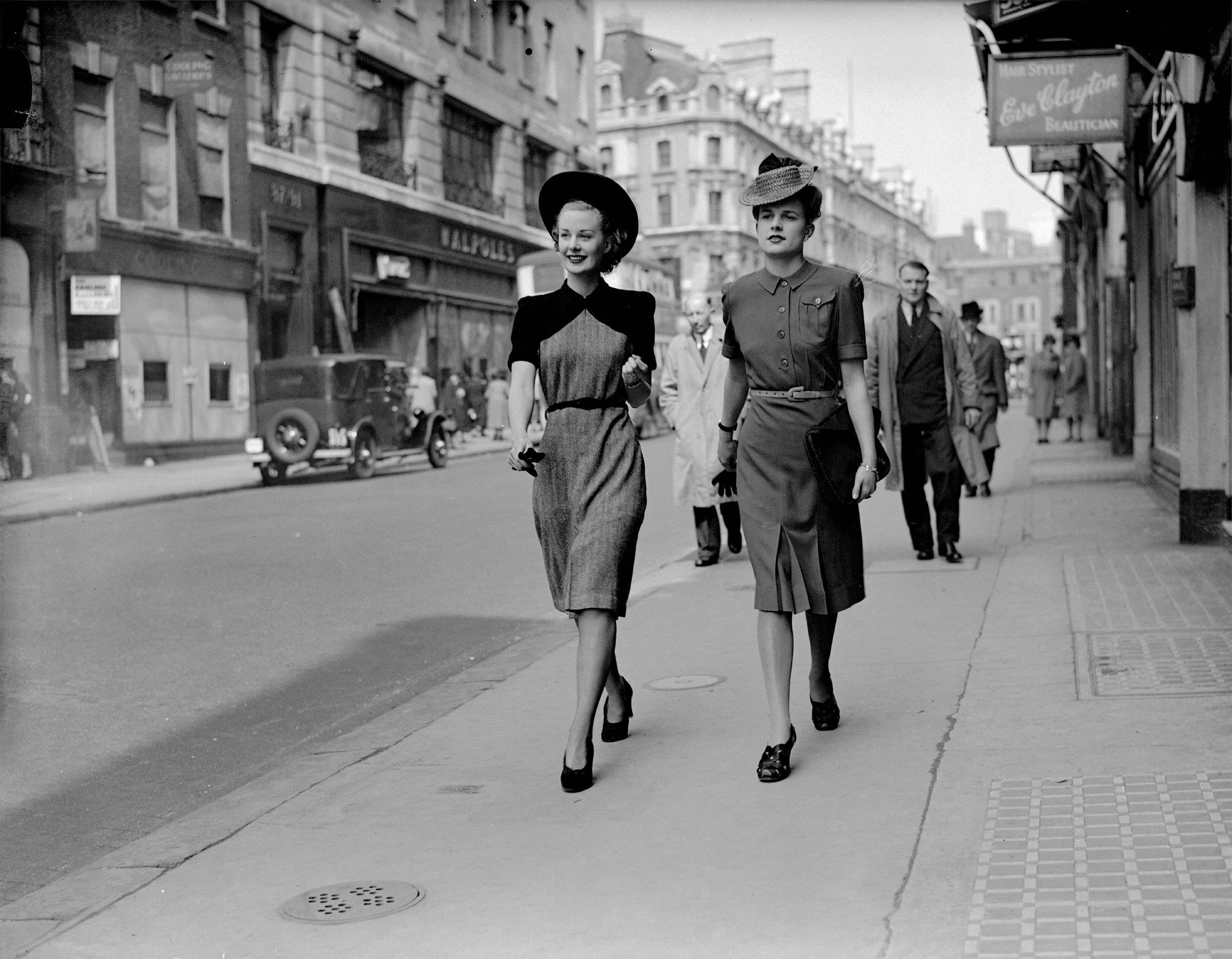
The first collection of utility dresses for women, designed by Norman Hartnell, are shown on May 14, 1942, at the Berkertex showrooms in Blenheim Street, London. The dresses are designed to avoid dullness and are obtainable in twelve colors, thus permitting 120 variations of each model. (AP Photo)
A group of famous designers including Norman Hartnell, Edward Molyneux, Bianca Mosca and Hardy Amies got together and became known as the Incorporated Society of London Fashion Designers (known as Inc. Soc. for short). The Board of Trade asked each Inc. Soc member to submit four designs for garments that could be included in the CC41 Utility wardrobe. In Septembr 1942 thirty-two of these designs were modelled by volunteering female war-workers. The designer’s collection contained four basic items – a coat, suit, afternoon dress and suit dresses for the office. None of the designers were credited and the designs became standard for Utility clothing from 1942 until late 1945. There was some initial resentment about the new Utility regulations but most of the complaining died down when the clothing started to reach the shops. People were generally surprised about the varied colours and styles and how most clothing was of relatively good quality and hard-wearing.

Britain’s fashion experts submit their designs to the Board of Trade, which advises changes to facilitate mass production of the clothes. In photo at left: an original costume, left, as submitted by designers, and the approved utility garment, right, which shows little difference between the two suits. At right: the original, left, compared with the smart utility counterpart, right, which was approved by the board at a fashion show in London.
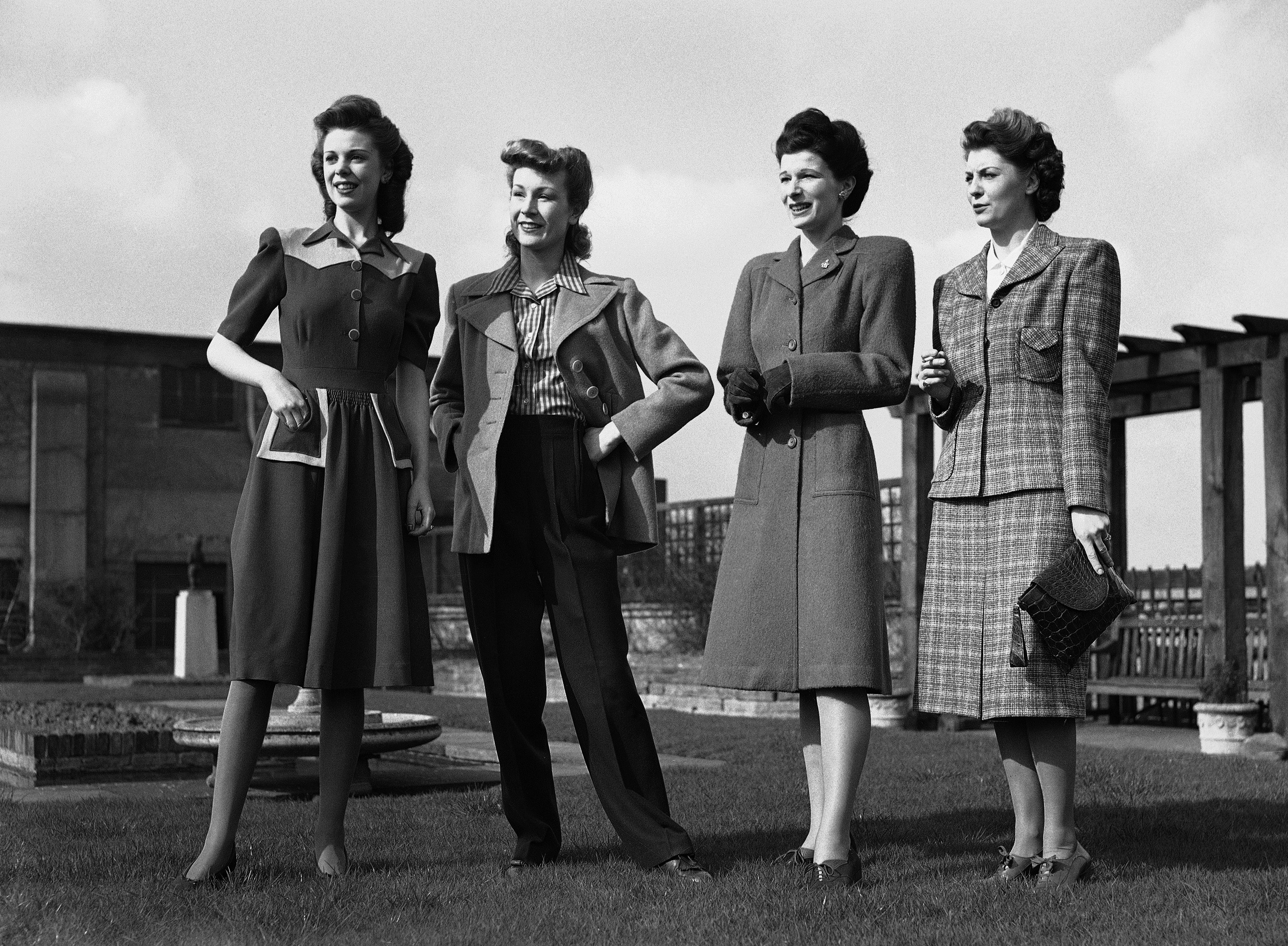
At a famous west end store, Norman Hartnell, Britain’s leading dress designer, sponsored a show of the new utility fashions for the coming season on March 9, 1943. These models, said Mr. Hartnell, are designed not only for the home market but also to uphold Britain’s fashion prestige abroad. From Left to right are: a 2-tone blue frock by Frances Leopold with unusual model pockets; navy blue Jaeger slacks with camel-coloured duffle coat and a wool-taffeta check blouse, a moss green coat with full yoke and inset belt with balanced pockets.
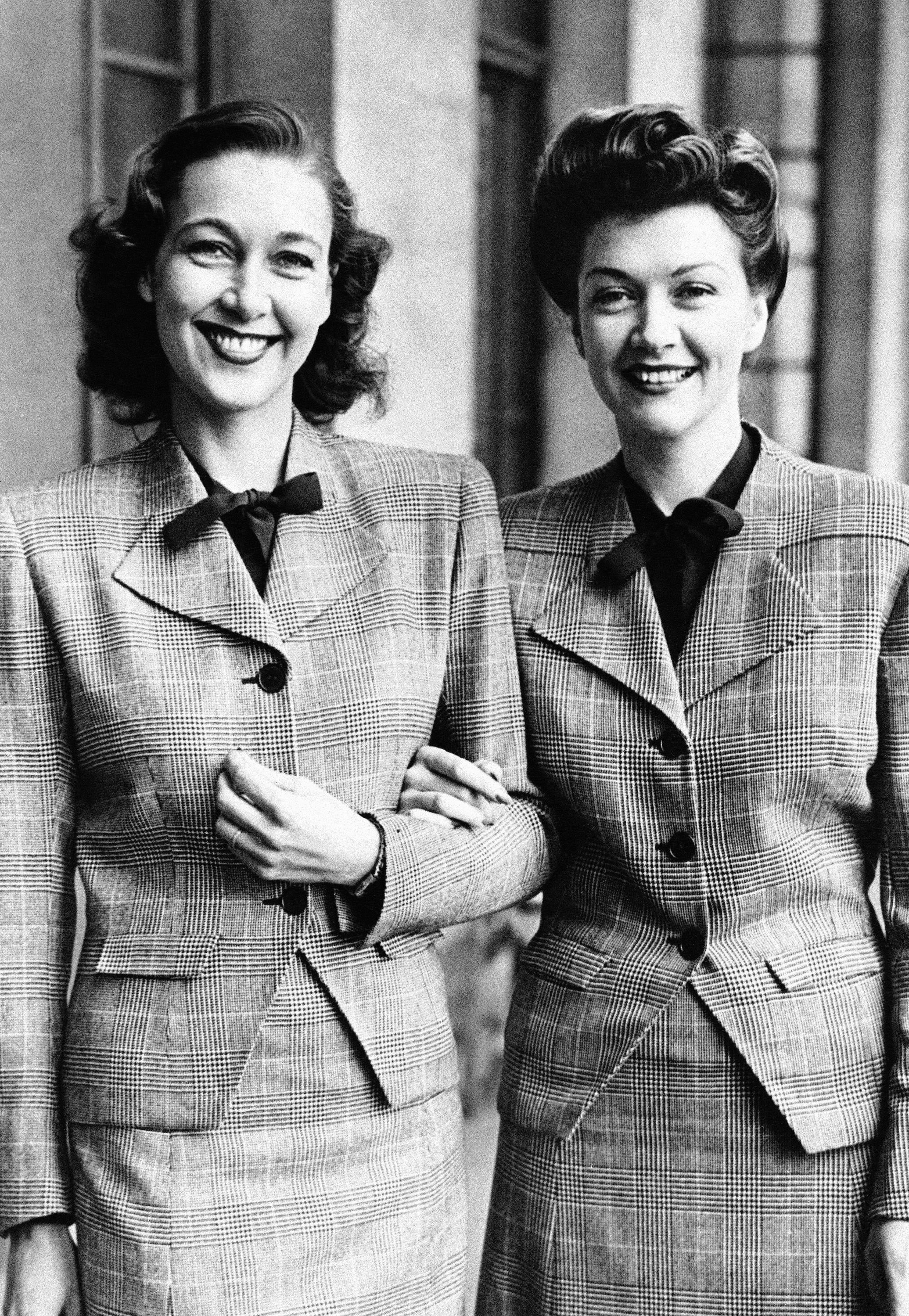
1942: Britain’s fashion experts submit their designs to the Board of Trade, which advises changes to facilitate mass production of the clothes. In photo at left: an original costume, left, as submitted by designers, and the approved utility garment, right, which shows little difference between the two suits. At right: the original, left, compared with the smart utility counterpart, right, which was approved by the board at a fashion show in London.

Another of the new prints, termed “Magenia,” of blue and mauve massed flowers shown March 14, 1944, inspired by the former and present Vicereines of India, respectively, Marie, Marchinoness of Willing-Don and Viscountess Wavell. These tones are favourite effects with those ladies. (AP Photo)
The new clothing regulations produced a slim female silhouette with nipped in waists and narrow skirts with Vogue describing the look as “sharp cold and even bold”. Vogue also wrote in October 1942 that “All women have the equal chance to buy beautifully designed clothes suitable to their lives and incomes. It is a revolutionary scheme and a heartening thought. It is, in fact, an outstanding example of applied democracy”.
The Utility scheme later included furniture (the CC now stood for ‘Controlled Commodity’) and it continued for several years after the war until it was finally withdrawn in 1952.

The first examples of the new utility furniture were shown to the trade in London on Oct. 15, 1942. The show included tables chairs, sideboards and beds. Plywood and all the “Trimmings” of peacetime furniture have been cut out. A utility dining-room suite, with his furniture given a light oak finish. (AP Photo)
Would you like to support Flashbak?
Please consider making a donation to our site. We don't want to rely on ads to bring you the best of visual culture. You can also support us by signing up to our Mailing List. And you can also follow us on Facebook, Instagram and Twitter. For great art and culture delivered to your door, visit our shop.
